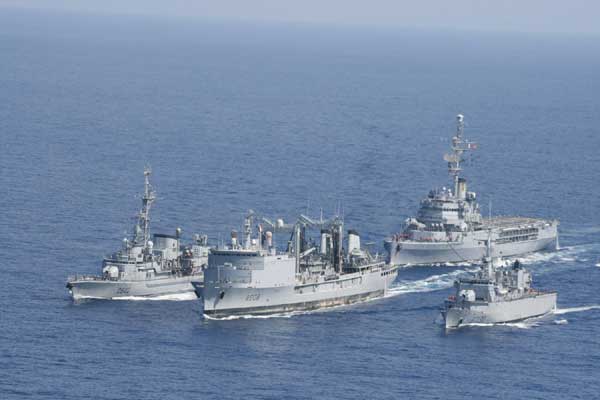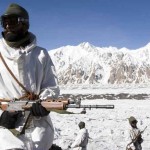Phase 2: 1971-1990: The Office of the Historian of the US State Department which has recently released the declassified documents of the Nixon Administration terms the policy of the US President as “The Tilt”. While Washington tilted heavily towards Karachi during the Bangladesh Liberation War, Paris’ position was more balanced.
During the debate in the UN Security Council, the French Representative declared: “We appreciate the fact that India cannot feel satisfied with a superficial solution when it has millions of refugees under its care”. The Indian Official Report of the 1971 war stated that although the UK and France were both allies of the United States, “they did not toe the American line”.
The second part of this initial batch consisted of 10 more single-seaters with the M53-P2 engine, with these aircraft designated Mirage 2000H. A second batch of six Mirage 2000H single-seaters and three Mirage 2000TH two-seaters was shipped in 1987-1988. En 1986, 9 more planes were ordered.16
France keeping equidistance between India and Pakistan will remain a serious bone of contention between Delhi and Paris during the two decades.
By the end of 198217, India received its first Milans, the reputed Franco-German anti-tank guided missile. The Bharat Dynamics Limited started manufacturing them in January 1985 under a French license.18
Before President Mitterrand’s visit in February 1989, France concluded a contract for the feasibility study of the construction of an aircraft-carrier in the dockyards of Cochin for the Indian Navy; this project never fructified.
It is necessary to mention some events which (directly or indirectly) played a role in the Indo-French relations during these two decades. The contacts between India and France could be said to be cloudless (except for Paris’ propensity to equate Delhi and Islamabad), but lacking dynamism (some watchers called them ‘lethargic’).
- In May 1974, India tested a plutonium bomb in Pokhran in the desert of Rajasthan. During the following eight years, French collaboration for civilian use of the atom was discontinued.
- In the mid-seventies, Indian and French intelligence had a very friendly rapport. It is said that the R&AW Chief, RN Kao traveled to Paris to meet his counterpart, Alexandre de Marenches to set up a tripartite collaboration between the R&AW, the SDECE and the Iranian SAVAC.
In the mid-seventies, Indian and French intelligence had a very friendly rapport.
- The Soviet invasion of Afghanistan reinforced the position of Pakistan as the favourite partner of the United States in the region, creating at a same time an arms race in the region. It was difficult to convince Delhi that the US supplies were against the Russian presence in Afghanistan only. In these circumstances, Paris could have been an alternative to the Soviet Union in defence collaboration with India. It did not fructify.
- In 1982, an India-France Defence Memorandum of Understanding was signed.19Later the creation of an armament committee and an Indo-French Defence Cooperation Working Group helped to start institutionalising the relations in the field of defence, in fact mainly in armament transfer.
- With India spending more than 3% of its GDP on defence expenditure, Delhi became the world’s largest importer of armaments. For the period between 1972 and 1991, France’s share remained below 5 percent of the total import bill, while the Soviet Union cornered 72 percent.
In 1982, an India-France Defence Memorandum of Understanding was signed. Later the creation of an armament committee and an Indo-French Defence Cooperation Working Group helped to start institutionalising the relations in the field of defence”¦
- A few months after Indira Gandhi was assassinated in October 1984, a “spy scandal,20the most serious ever”, as per Rajiv Gandhi, made the front page of the media. French intelligence officers used to visit the PMO, select thousands of documents and take photocopies of whatever files interested them. The French Ambassador was eventually declared persona non grata and given 48 hours to leave the country. The Hindustan Times wrote that the extent of the scam “staggered the imagination of investigating officials… The security system and our vital papers have been stripped clean.” This did not hamper India’s collaboration with France (particularly for the Mirage deal). Le Monde in an article before the State visit of President Mitterrand in 1989 stated that Rajiv Gandhi ‘had forgiven’ France.
- In 1984, the Siachen became the highest battlefield in the world. Though the high altitude forbids the use of heavy weapons, small equipment became in demand. One should point out the extraordinary service of the Cheetah and the Chetak (ex-Allouette) helicopters.
- Another scam which had indirect ramifications for France is the Bofors arms deal which has remained in the news for the past twenty years. After his retirement, the former Army Chief General K. Sundarji affirmed: “In 1982, talks were going on with the French government for 300-odd pieces of Sofma self-propelled guns. I then suggested the French gun because the army decided that the performance and trials held in India could be the basis of selection. And the Sofma fitted into the category.”The rest of the story is known.
- What India considered as one of the most damaging aspect for the bilateral relations was Paris’ ambivalent relation with Pakistan. France keeping equidistance between India and Pakistan will remain a serious bone of contention between Delhi and Paris during the two decades.21
These are some of the events which influenced, in one way or another, the bilateral relations in the field of defence between the two nations during this period.





